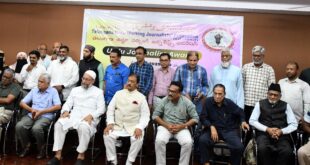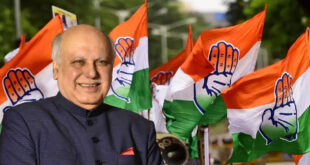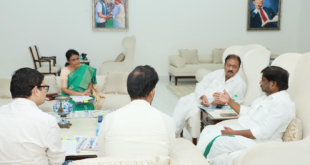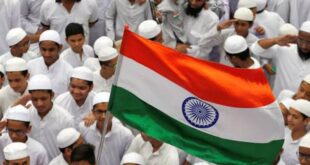by Asad Mirza
The only face off seems to change the retrospective date for the NRC and instead set a current date for new citizens being born in India e.g. after 1 Jan 2020.
The on-going protests against the CAA-NRC-NPR trio have entered 36th day now. The government is adamant on its decision to roll out the trio in a phased manner throughout the country, whereas the protestors are not ready to withdraw their agitation against the decision.
One protest, which has become a torchbearer and inspiration to score of small protests across India, is the sit-in by Muslim women at Shaheen Bagh, Delhi. It has also scored high decibel eyeballs in the global media. The sit-in, which started on the night of 15 December 2019, has become a high point of tussle between the government and the protestors.
Courtesy the optics at Shaheen Bagh and everywhere else in the country, these demonstrations have been termed as being led by Muslims, whereas nothing could be a far cry from the truth.
The protests were started by students, both Hindu and Muslims, who in turn got support of the conscious and aware people, both Hindus and Muslims, demonstrations and protests throughout India were initiated and led by both Hindus and Muslims, but since you can easily identify the skull caps and burkhas/hijabs, so just by the sheer number of Muslim participation they were dubbed as Muslim-led demonstration. Two examples to prove the point, the huge iron map constructed at Shaheen Bagh has been made by Bir Chand of Shantiniketan and Pawan Shukla of Jadavpur University, who travelled all the way from W Bengal to Delhi to join the demonstrations and express their solidarity with the women at the sit-in by their art work. Sikhs from Punjab are regularly organising langars at Shaheen Bagh.
Even if the demonstrations were led by Muslims, then why such a hue and cry? Can’t Muslims of India demonstrate against a law which they feel strikes at the very root of their identity and legal status? These demonstrations have empowered a vast multitude of Indian Muslim women also. For the first time those Muslims who always took their cue from their community and religious leaders, came out into the streets not at the call of these leaders but on their own, fearing for their and their children future in the country.
For Muslims, the demonstrations have also proved to themselves, that yes, if the things get worse, then they are ready to mount a challenge to the government diktats. Muslims, were feeling victimised during the last 7 months, due to various decisions of the government coming at each other’s heels, like the Triple Talaq Bill, scrapping of Art 370 in Kashmir and go ahead given by the Supreme Court to construct a Ram Mandir at Ayodhya, in reality all these high-handed decisions were in fact deep penetrating strikes at their collective psyche.
However, the citizenship imbroglio proved too much for them and they took to the streets, to challenge acts striking at the basic structure of our constitution and the very edifice of secularism, on which modern India was supposed to stand and develop.
Now to the question as to how long the demonstrations could continue. The only
hope which the people of India have in this regard, is the hearing by the Supreme Court, shortly. But even in that case the court can’t strike down at the validity of the law as it was passed procedurally by the parliament. The only feasible option in the current scenario could be that instead of a retrospective cut-off date, the court fixes a current date i.e. 1 January 2020 as the date from which the new provisions come into effect.
As regards to Shaheen Bagh women putting a large number of commuters to inconvenience, it would be pertinent to point out that the road has been barricaded on both carriageways by the police, not by the protestors and it would be better the police could open at least one carriage way to lessen the commuters woes.
Secondly, as the protests are not managed by any political party, analysts feel that with the start of campaigning for the Delhi state elections shortly, the tempo may start withering down and in the next fortnight or so, only a handful of protestors may remain on the road.
However, if that happens, then the community should not feel dejected. But it should take heart from the fact that the brave women of Shaheen Bagh motivated a large number of Muslims to rise together perhaps for the first time, without any religious or political leader leading the demonstrations, thus proving that the community is still awake.
These protests by both Muslims and secular people of the country have strengthened their belief that they are together in this fight and they’ll be able to mount a challenge to these divisive tactics, in future too.

Asad Mirza is a Sr journalist based in New Delhi.
In his career spanning more than 20 years, he was also associated with BBC Urdu Service and Khaleej Times of Dubai.
He writes on Muslims, educational and international affairs issues.
Email: asad.mirza.nd@gmail.com
 Gawah (The Witness) – Hyderabad India Fearless By Birth, Pristine by Choice – First National Urdu Weekly From South India – Latest News, Breaking News, Special Stories, Interviews, Islamic, World, India, National News
Gawah (The Witness) – Hyderabad India Fearless By Birth, Pristine by Choice – First National Urdu Weekly From South India – Latest News, Breaking News, Special Stories, Interviews, Islamic, World, India, National News





